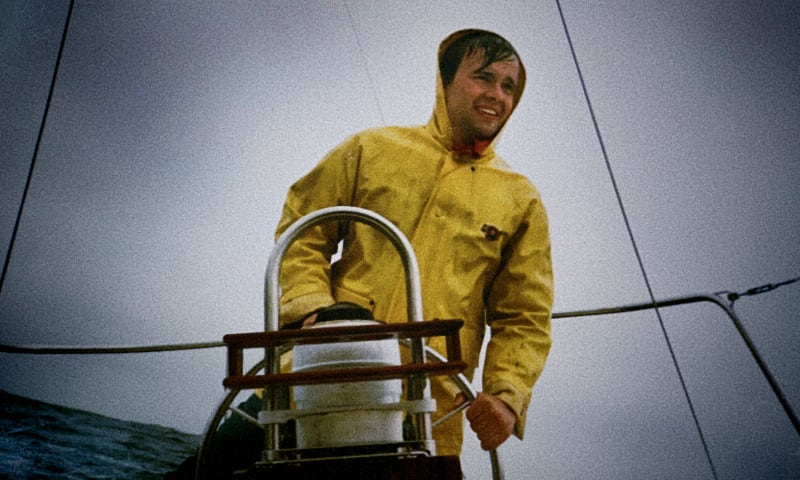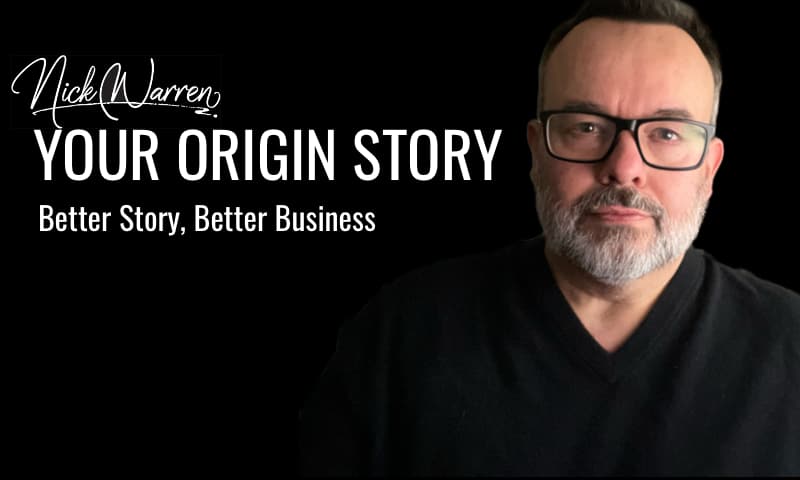The Transcript
Nick: Hey there friends. This is Nick and this amazingly is episode 1000, of the stories mean business podcast. And I’m absolutely thrilled. You’ve listened to the last couple of episodes. You’ll know that today we have, well, a legendary guest. I’m going to say Seth Godin, welcome to the podcast. Thanks for coming on.
Seth: How could I miss number 1,000? 1,000! Well done.
Nick: You know, I was actually, I was saying to my kids, I said in my world, Seth Godin is a rock star. That sense you get when you’re able to follow a really good band for, for a number of years or decades, perhaps, and you get that, you get that sort of sense of the conversation they’re having with themselves.
I think the first book I read of yours was Permission Marketing in 1999. And it really changed the way I thought about how I was building my business. You were talking about stories then, and this is a podcast all about storytelling. What I want to do, if it’s okay with you, is try to just explore a little bit three of the myths that you’ve already talked about in your work.
And I’m going to start with a book that you wrote in 2005, which is one of my favorites, All Marketers Are Liars. And the very first lines in that book. Just fantastic. Here we go. Don’t just tell me the facts. Tell me a story instead. Be remarkable. Be consistent, be authentic. And here’s the line that really got me at the time.
Tell your story to people who are inclined to believe it.
Because most of us still think that marketing is about changing people’s minds. Don’t we? And I’d love to get into why changing people’s minds isn’t really a good idea.
Seth: Yeah. It’s almost impossible to change people’s minds. And first thank you for having me.
And thanks for this work you’re doing. All Marketers Are Liars has the worst title of any book I have ever worked on. It’s an example of how hard it is to change people’s minds. People who believe that all marketers are liars in the negative sense, aren’t going to buy a book like this and people who don’t believe that who see themselves as marketers, aren’t going to buy a book like this.
And so it was, it was hubris on my part. Unless you are running a social charity, a campaign to fundamentally change human beings. Unless you need a majority of the voters, your path is not to change people’s minds. Your path is to activate people who are already inclined to agree with you. So it’s for people who believe this you’ve been right all along and now you can do it even more.
And that is so much more direct than saying you’re wrong and ugly. But I’m going to change your mind.
Nick: Yeah. And you’ve talked about the way that we can activate people’s worldviews’ through frames and refine our marketing messages. Our stories really, I call it TaeKwonDo marketing. It’s almost like taking the energy that they already have and using it to help them.
Seth: Yes exactly.
Nick: This book actually isn’t yours, but in 1995, I was lucky enough to be in New York. And I sailed through New York city. And this book was a book that you’ve mentioned a couple of times in your work. One of the amazing things that Scott McLeod says in this book, it’s about comics. I’ve talked about it on the podcast before, but it’s he talks about is this gap between the frames in a comic book.
And he talks about how comic book artists are reliant on us as the silent third party to actually create the kind of stories. And I think, again, it’s one of those myths that we think about in marketing, that we are somehow still in control of the story.
Seth: It’s probably worth six hours to eight hours to, take apart bit by bit, but Scott’s book is one of the best non-fiction books on any topic I’ve ever read. And you will never watch a movie the same way after you read it.
There was a Netflix show in which the director intentionally showed people walking through doorways. And what you realized is in every other TV show you’ve ever seen in every other movie, you never see people walking through doorways, you see someone starting and then it cuts and then they’re in. And that cut brings you into the process because you are now completing the story of, oh, it’s not that they teleported, but you are the person who guided them and those panels are everywhere that we look. There in the story of your favorite celebrity. There in, I mean, I know that you’re on the other side of the pond, the entire legend of the Royal family for the last 40 years is nothing but people imagining what’s happening in between all this stuff they’re reading in The Daily Mail.
Right. And so if you want to engage with people emotionally, you’ve got to let them do most of the work of telling the story.
Nick: One of your, um, your blog posts from a quite a while ago. I think you talked about building a kind of mythology, and it’s something that I talk about on the podcast and do with my clients quite often, that sense of, of there being more than one story, more than one way into, you know, whatever your brand or your product or your services, but fascinatingly, what you said in that was that there needed to be these kinds of gaps.
There needed to be these spaces. So that the audience could dig in. I’ve got this weird theory about soccer it’s related to this. Actually the, the, the reason that football, I would say was soccer is the most popular sport in the world is because that particular sport having the space to allow people to express themselves within it.
And I think there’s something about stories, well told stories at the same.
Seth: Absolutely true. And the other thing I would say about football is in American football, they wear helmets. And so it’s not a soap opera because you don’t know who’s involved. And in European football, it’s just a bunch of people. And the sense that people, you know, if I say Pele, people can imagine who I’m talking about and maybe Joe Namath or maybe murderer OJ Simpson, but in general, I can’t say the name of an American football player and have you visualize that person’s life?
Nick: Yeah, we’re missing the, one of the critical elements, which course is character in stories. And that seems to me to be one of the main problems with most business communication is there’s just no sense of character. There’s no sense of personality.
The last myth I want to talk about is actually related to some that you talked about on your podcast a couple of years ago, cause you, you spoke about your origin story.
You were stuck, weren’t you? I think he was stuck in, I’m trying to remember which American city it was? Cleveland. And it was fascinating because you talked about how your, your mum kind of gave you a sort of a, she gave you an insight into how you can interpret stories. And I think the contrast between action and interpretation, I think is really interesting.
Seth: Yeah. I mean, you know, each of us has had trauma in our background. People of privileged, like me have had far less trauma than some who have been on the short end of the stick unfairly for a really long time. And I’m not going to minimize anybody’s trauma, but two people who got beat up when they were nine years old, walked away from that interaction with totally different stories that they were telling themselves.
One is a story of I’m a victim and I will always be a victim. And another is a story of, I will never let anybody beat me up ever again. And that is our interpretation of what happened to us and what we should do with it. So no, none of the things that are in front of us are fair, but we still have agency and the question is what will you, as a marketer, who’s carrying around your own baggage about where you’ve been and where you’re going. Will you do with the agency that you have? Can you seek out better angels? Can you give people the benefit of the doubt? Can you make things better or is your narrative that you’ve got to hustle? That you’ve got to cut corners and you got to take what’s yours. You could have had similar life experiences and pick one or the other of those two paths.
Nick: Yeah, it’s a stoic idea. Really? Isn’t it. Um, Epictetus talking about, it’s not the thing, it’s how you think about the thing. You know, certainly one of the things I’ve learned working with clients and helping them tell their stories is that so often when they, when they actually talk to you and they, they hear something back in a way where we found the rhythm, we found, uh, the through line or the arc, they kind of reconnect with the heroic part of themselves.
And I think. Nassim Taleb, who said, I don’t talk to anyone ordinary over 40 because an ordinary person, this started dying when they were 30, unless they have a heroic bent. I love that line.
Seth: He is, he’s not short on provocation. Um, here, here’s a, uh, a shortcut I got from my friend, Jerry Colonna. When you’re talking to a client and you’re talking strategy, you can ask one of two questions that will really inform the next little bit of the conversation, which is what would your dad think of that? Or what would your mom think of that?
Nick: Ahh, yeah.
Seth: Because sooner or later that’s where our stories come back to.
Nick: Are there people that you see now who were doing this storytelling, this brand building or world building really well?
Seth: I have learned the most certainly from people like Bernadette and Zig Ziglar and Steve Pressfield, but from fiction. That if you look, just read the first 30 pages of Snow Crash, which Neal Stephenson wrote before the internet. Right. And I still remember Hiro Protagonist, or just watch the 90 seconds of King Arthur meeting the peasants in Monty Python and the Holy Grail. 90 seconds. It’s all you gotta watch.
There’s a whole world that was built in 90 seconds with the coconuts and everything. We’re all capable of that. It’s not about money anymore. It’s about, do you have a keyboard and do you have something to say? And if you do well, go say it.
Nick: Yeah. That’s fantastic. Thank you so much. Just to end up, I want to say about Free Prize Inside.
You said… you talked about your favorite Zig Ziglar story. Which was to do with with the guy, he was on the other side of the river, throwing all the, the big fish back. Yeah. And you remember that and the guy, the guy who’s watching and says, why are you throwing with the big fish back?
Seth: All I’ve got all I’ve got is this little itty-bitty frying pan.
Nick: Yeah. And it was a provocation from you to take bigger swings. So that’s one of the reasons I reached out to you. I’m really, really grateful that you agreed to come on. Thank you so much. And I look forward to your, your next book.
Seth: Oh, it’s a pleasure. We’ll see you at episode 2000. Keep making a ruckus!.
Head back to the Seth Godin on Story page, or …
Or choose a path towards stories that mean business.

Explore the art and science of business storytelling. The rabbit hole goes way deeper than you think.

The Business Storytelling Glossary lists the concepts, ideas and definitions that use in my work. Your mileage will vary.

